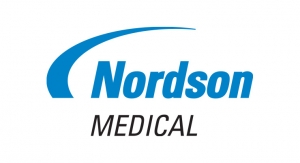Emily Newton, Editor-in-Chief, Revolutionized03.30.21
Like many medical supplies, IV bags are in short supply. But things are getting better.
Due to the pandemic and other world events, many medical supplies are hard to come by these days. Pharmaceuticals and medicines are experiencing a shortage, but so are some of the more prominent components like gloves, masks, ventilators, and even cleaning supplies.
Another shortage making waves is the lack of IV bags. Part of it is a shortage of saline, which is produced and stored in IV bags. It may be “just” saltwater, but it’s manufactured in a sterile environment and kept both pyrogen- and particulate-free. Those requirements mean it can’t just be produced anywhere.
IV bags, in general, are in short supply, including many types and sizes. It puts a strain on the entire industry, from the manufacturers producing the supplies to the medical centers that rely on them for patient care.
What is causing all of this? What’s to blame for the shortages?
Why Are There Medical Supply Shortages?
COVID-19 is a major factor. Alongside other public health events, it has put an incredible weight on the medical community’s shoulders. Hospitals everywhere have been dealing with nearly full or overflowing patient capacities due to the illness. The more people who need treatment, the greater the demand for medicine and supplies.
The pandemic isn’t the only factor. Unfortunately, it happened at a time when medical supplies were already in a deficit. With IV bags, for example, Hurricane Maria back in September 2018 was the culprit.
The hurricane hit Puerto Rico, which is the operations center for many pharmaceutical companies, including Baxter. An already short supply was made worse by the natural disaster, and it halted production.
From there, other providers were unable to make up for the shortage. IV bag manufacturers have been playing catch-up ever since, and then the pandemic hit, making things that much worse.
Most of the shortages follow a similar pattern as IV bags, with a deficit that continues to grow each day. Demand continues to rise, not just because of COVID-19 but also because of a long list of other health conditions and ailments.
Why IV Bags?
IV bags are used to distribute fluids and medicine to patients, especially those who cannot acquire the necessary supply themselves. For example, patients undergoing an operation receive IVs, which provide critical fluids like saline. The fluids are stored inside the bag, and they’re distributed slowly through sterile tubes using a drip method. This is commonly known as an intravenous system (IV).
The bags are also used to store various other liquid supplies, including blood.
Because of the unique requirements, medical providers cannot just buy these bags from anywhere. They must have been created in a sterile and safe environment, whether empty or full.
Special radio-frequency tools are necessary to seal the bags properly, which means finding a manufacturer with the right know-how and equipment. Many IV bags also have a proprietary design, built specifically to distribute whatever fluids are inside. Blood IV bags, for instance, are slightly different from saline or conventional fluid IV bags.
Moreover, the bags come in a variety of sizes ranging from small to large. Baxter is a major producer of the smaller variants. When it encounters problems, as it has recently, it creates a shortage of a specific type of IV bag. This can have sweeping implications for medical providers.
Other manufacturers are forced to pick up the slack, but it means focusing on that particular size, taking away resources from other variants. The result is a significant shortage across the board, regardless of bag size or type.
All of these requirements, and the difficulties in adhering to them, compound to create an even larger problem, made worse by the shortages.
How Will Manufacturers Solve the IV Bag Shortage?
There is some good news. From the FDA to new manufacturers, many parties are united in the pursuit of ending the shortage and increasing the overall supply, using whatever means are available.
The situation has not gone unnoticed, as companies like B. Braun Medical have begun investing money to improve the situation. B. Braun is opening a new manufacturing plant in Florida, renovating a center in California, and expanding production in Pennsylvania, for a total of $1 billion in investments. This will introduce a new supply of IV bags into the medical field once the adjustments have been made.
The FDA is also considering moving back the expiration dates for existing IV supplies, provided it can be done safely. The agency has enlisted the help of international manufacturers as well, such as German-operated Fresenius Kabi, and Spain’s Laboratorios Grifols.
Baxter and the other major providers have also ramped up production, which should soon boost supply, although there’s no definitive end in sight. The FDA has released an industry-specific guide encouraging the conservation of current supplies. If followed, medical providers should be able to stretch their current inventories to weather the storm.
When Will It End?
The shortage is complicated, which means there’s no clear answer. Fortunately, the FDA has already made concessions to improve the situation, along with several manufacturers like B. Braun Medical. Also, medical providers are doing their best to conserve existing supplies and to stretch incoming supplies—infrequent as they are—as much as possible.
There are no valid estimates for when the shortage might lessen or end altogether. Even though that news doesn’t inspire confidence, many parties are working to improve the situation, so things are looking more positive than grim. The influx of newly manufactured goods should be entering the market soon, within the second or third quarters of 2021.
Hopefully, it won’t be too long before supplies are readily available and inventories are full again.
 Emily Newton is the Editor-in-Chief of Revolutionized. She’s always excited to learn how the latest industry trends will improve the world. She has over four years of experience covering stories in the science and tech sectors.
Emily Newton is the Editor-in-Chief of Revolutionized. She’s always excited to learn how the latest industry trends will improve the world. She has over four years of experience covering stories in the science and tech sectors.
Due to the pandemic and other world events, many medical supplies are hard to come by these days. Pharmaceuticals and medicines are experiencing a shortage, but so are some of the more prominent components like gloves, masks, ventilators, and even cleaning supplies.
Another shortage making waves is the lack of IV bags. Part of it is a shortage of saline, which is produced and stored in IV bags. It may be “just” saltwater, but it’s manufactured in a sterile environment and kept both pyrogen- and particulate-free. Those requirements mean it can’t just be produced anywhere.
IV bags, in general, are in short supply, including many types and sizes. It puts a strain on the entire industry, from the manufacturers producing the supplies to the medical centers that rely on them for patient care.
What is causing all of this? What’s to blame for the shortages?
Why Are There Medical Supply Shortages?
COVID-19 is a major factor. Alongside other public health events, it has put an incredible weight on the medical community’s shoulders. Hospitals everywhere have been dealing with nearly full or overflowing patient capacities due to the illness. The more people who need treatment, the greater the demand for medicine and supplies.
The pandemic isn’t the only factor. Unfortunately, it happened at a time when medical supplies were already in a deficit. With IV bags, for example, Hurricane Maria back in September 2018 was the culprit.
The hurricane hit Puerto Rico, which is the operations center for many pharmaceutical companies, including Baxter. An already short supply was made worse by the natural disaster, and it halted production.
From there, other providers were unable to make up for the shortage. IV bag manufacturers have been playing catch-up ever since, and then the pandemic hit, making things that much worse.
Most of the shortages follow a similar pattern as IV bags, with a deficit that continues to grow each day. Demand continues to rise, not just because of COVID-19 but also because of a long list of other health conditions and ailments.
Why IV Bags?
IV bags are used to distribute fluids and medicine to patients, especially those who cannot acquire the necessary supply themselves. For example, patients undergoing an operation receive IVs, which provide critical fluids like saline. The fluids are stored inside the bag, and they’re distributed slowly through sterile tubes using a drip method. This is commonly known as an intravenous system (IV).
The bags are also used to store various other liquid supplies, including blood.
Because of the unique requirements, medical providers cannot just buy these bags from anywhere. They must have been created in a sterile and safe environment, whether empty or full.
Special radio-frequency tools are necessary to seal the bags properly, which means finding a manufacturer with the right know-how and equipment. Many IV bags also have a proprietary design, built specifically to distribute whatever fluids are inside. Blood IV bags, for instance, are slightly different from saline or conventional fluid IV bags.
Moreover, the bags come in a variety of sizes ranging from small to large. Baxter is a major producer of the smaller variants. When it encounters problems, as it has recently, it creates a shortage of a specific type of IV bag. This can have sweeping implications for medical providers.
Other manufacturers are forced to pick up the slack, but it means focusing on that particular size, taking away resources from other variants. The result is a significant shortage across the board, regardless of bag size or type.
All of these requirements, and the difficulties in adhering to them, compound to create an even larger problem, made worse by the shortages.
How Will Manufacturers Solve the IV Bag Shortage?
There is some good news. From the FDA to new manufacturers, many parties are united in the pursuit of ending the shortage and increasing the overall supply, using whatever means are available.
The situation has not gone unnoticed, as companies like B. Braun Medical have begun investing money to improve the situation. B. Braun is opening a new manufacturing plant in Florida, renovating a center in California, and expanding production in Pennsylvania, for a total of $1 billion in investments. This will introduce a new supply of IV bags into the medical field once the adjustments have been made.
The FDA is also considering moving back the expiration dates for existing IV supplies, provided it can be done safely. The agency has enlisted the help of international manufacturers as well, such as German-operated Fresenius Kabi, and Spain’s Laboratorios Grifols.
Baxter and the other major providers have also ramped up production, which should soon boost supply, although there’s no definitive end in sight. The FDA has released an industry-specific guide encouraging the conservation of current supplies. If followed, medical providers should be able to stretch their current inventories to weather the storm.
When Will It End?
The shortage is complicated, which means there’s no clear answer. Fortunately, the FDA has already made concessions to improve the situation, along with several manufacturers like B. Braun Medical. Also, medical providers are doing their best to conserve existing supplies and to stretch incoming supplies—infrequent as they are—as much as possible.
There are no valid estimates for when the shortage might lessen or end altogether. Even though that news doesn’t inspire confidence, many parties are working to improve the situation, so things are looking more positive than grim. The influx of newly manufactured goods should be entering the market soon, within the second or third quarters of 2021.
Hopefully, it won’t be too long before supplies are readily available and inventories are full again.

























